The truth about viewing the aurora borealis
The aurora borealis is Mother Nature’s gift to Northern residents. A good display can light up a winter night in ways that bring photographers and nature lovers from around the world. But what are the odds of seeing them? Now and for the next few years, they aren’t good. Here are the facts from someone with no financial interest in the answer, but I’ve also offered suggestions on how to understand what you’re seeing, and maximize your chances of getting the photos and the experience you’re after.
I should first explain what my connection with the aurora is. My interest in the aurora is both as a photographer and a nature lover. To share the love, I created a Yukon Aurora group on Facebook in November 2013. Now called “The Aurora Borealis in Canada’s Yukon“, it has over 2,300 members sharing photos and experiences, and asking related questions. In October 2017, I created another group, Aurora Alert Yukon, specifically for Yukoners to alert others when the aurora is putting on a show – it has just over 600 members.
I shot all of the photos in this post, and all were shot in the southern Yukon. They are posted in chronological order, from 2012-2018, chosen from the thousands of images in my Aurora folder.
The science behind the aurora borealis is basically simple, but there are still things about it that we don’t understand completely. The lights in the sky are caused by charged particles being ejected from the sun, hitting the Earth’s atmosphere. The activity that ejects those particles is most easily seen as sunspots, and occurs on a cycle of roughly 11 years (though it can stretch to almost 15 years). The period when there is the most activity, and thus the most common aurora, is called the solar maximum. At the other end of the scale, the period of least activity and fewest aurora, is called the solar minimum. Now, in the winter of 2018-2019, we are at the approximate solar minimum. The next solar maximum will be the winter of 2023-2024. Guesses about how strong it will be, though, vary dramatically, from very strong to the weakest ever.
The next photo was shot at the Yukon River Bridge on the Alaska Highway just east of Whitehorse, on March 27, 2012. In this and some of the other photos below, you’ll see that having man-made lights in the image can shift the colours of the aurora. Further down in this post, I’ll explain a way to easily change the colour on purpose.
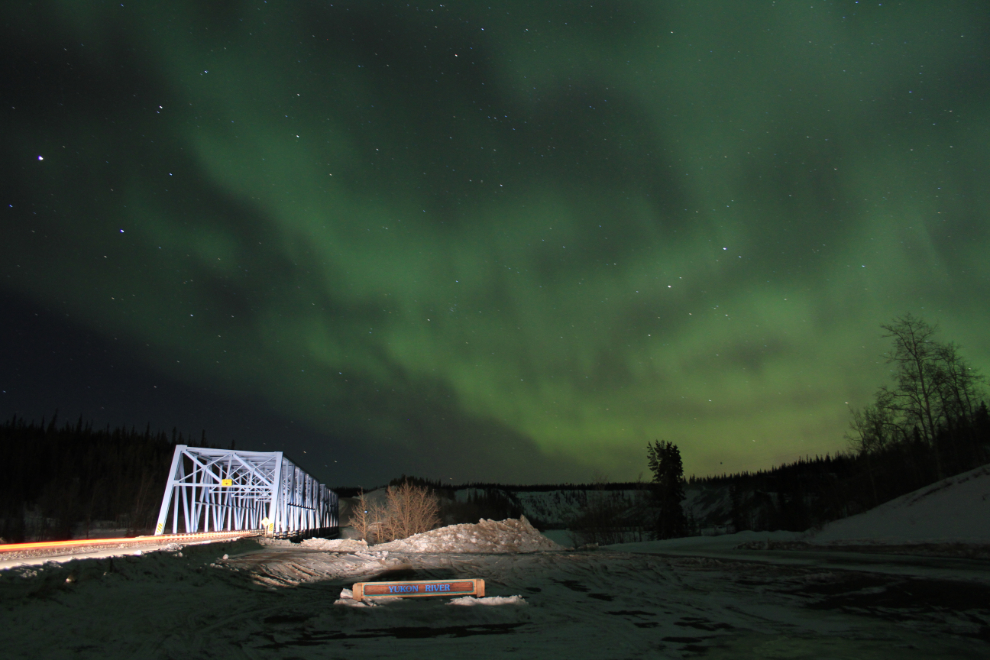
All solar maximum periods are not equal. The 2013-2014 one was widely reported to be the weakest solar maximum in 100 years. As you can see on the linked Space.com page, 2000-2001 was very good, and 1990-1991 was quite exceptional. I was living in Carcross with a broad view to the north across Lake Bennett during the 2000-2001 event, and I remember incredible displays night after night after night. I had no idea how to photograph the aurora, but my next-door neighbour then, Wayne Roberts, borrowed a high-end DSLR and got thousands of amazing photos.
Yukon River Bridge, February 23, 2015. Having reds and purples in an aurora display is what we all hope for, but they don’t occur very often.
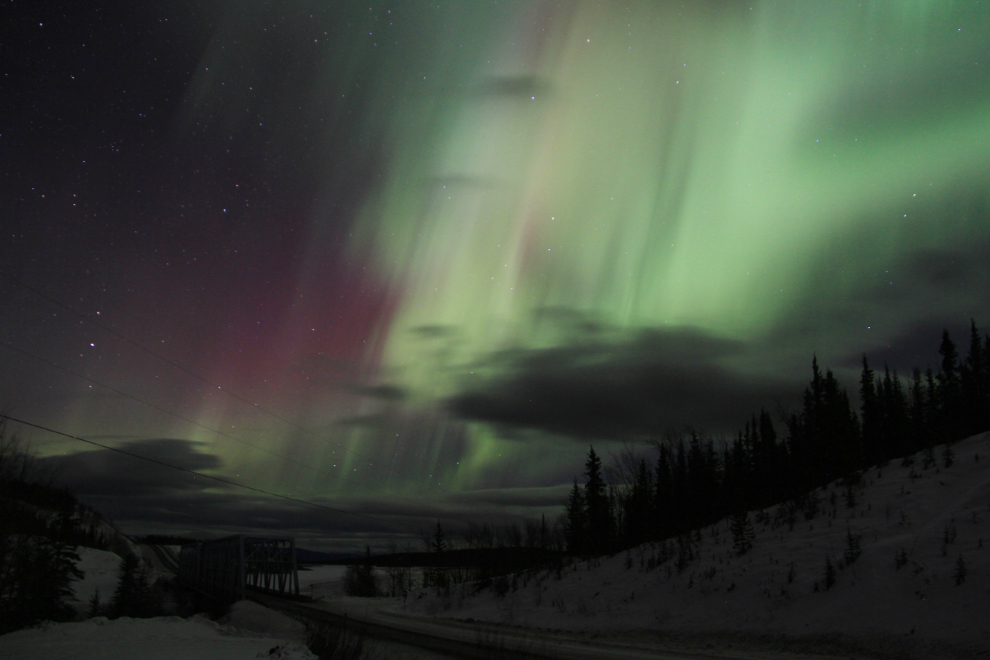
Aurora over the Lewes River Dam.
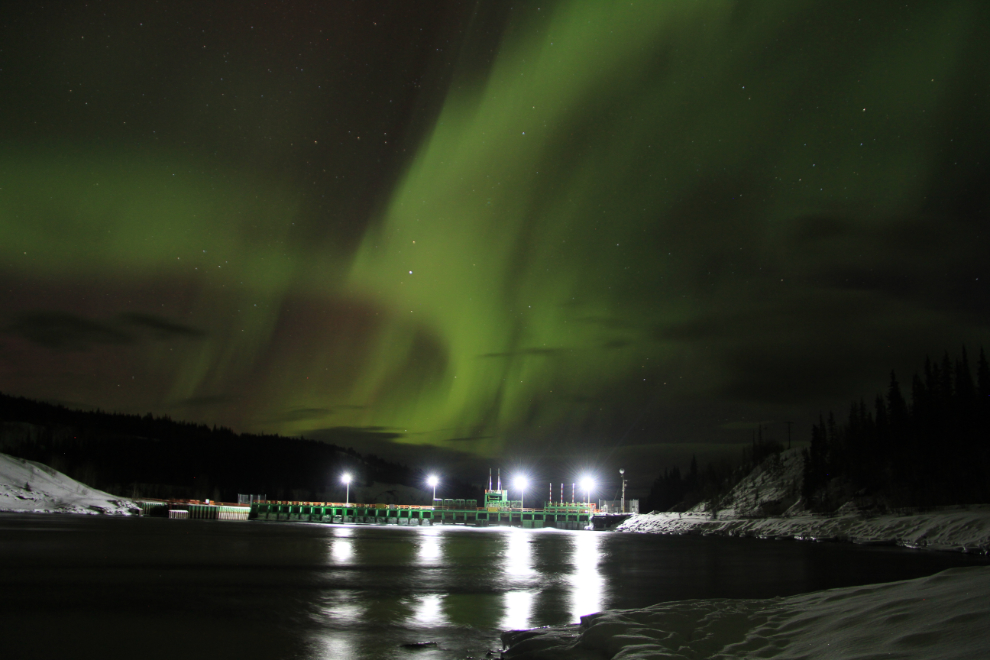
An article on CBC in November 2018 stated that tourists shouldn’t wait for solar maximum to see the Northern Lights, because “there will always be a solid display in northern centres such as Yellowknife, Churchill, Iqaluit and Dawson City.” The photos posted on aurora sites verify my thoughts about that – very few are being posted now, because good aurora displays are few and far between.
M’Clintock River Bridge, Alaska Highway.
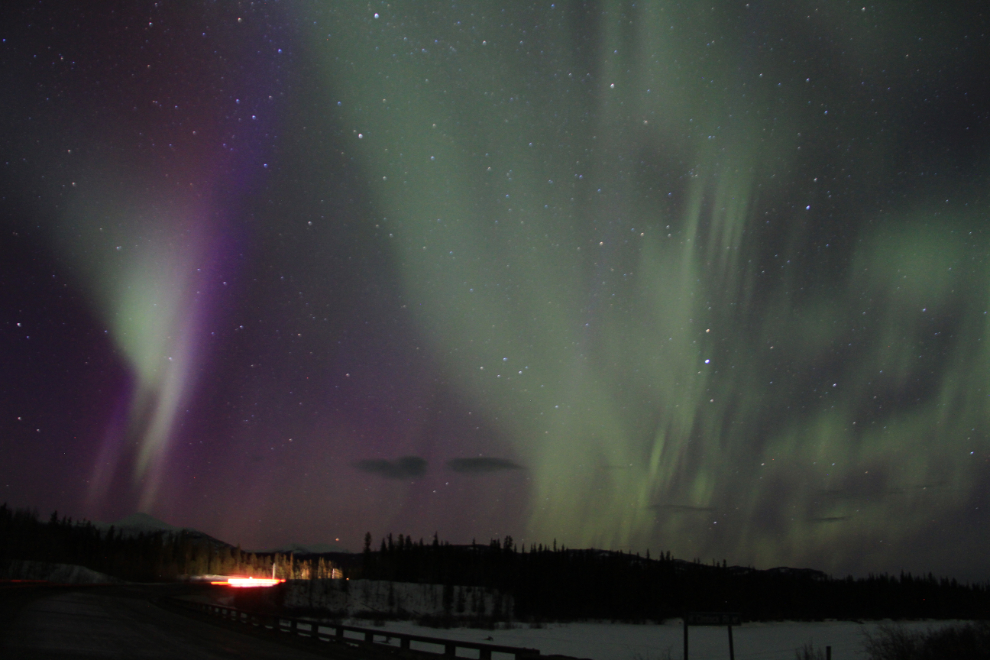
Many Web sites say that the solar minimums and maximums don’t matter because in the far North, the aurora is always visible. That may be true for sensitive instruments, but it’s not true for the human eye/brain combination. A DSLR will capture aurora, and aurora colours, that your eye doesn’t see. I have night photos that I shot for other reasons and was surprised to find a dull aurora in them. What I’m talking about in this post is aurora displays that are worth travelling for, or even worth setting your camera up for. I’m talking about aurora that will make you stop whatever you’re doing to watch it.
The aurora has no time schedule. A display may go on all night, or it may only last 10 minutes. It can be extremely frustrating to get skunked and then see photos taken 10 minutes after you went to bed posted. Patience is part of the skillset needed to take part in this hobby 🙂
Whitehorse airport, March 1, 2015. It takes a very strong aurora to overpower the man-made lights in locations such as this – getting away from man-made lights is generally the best advice.
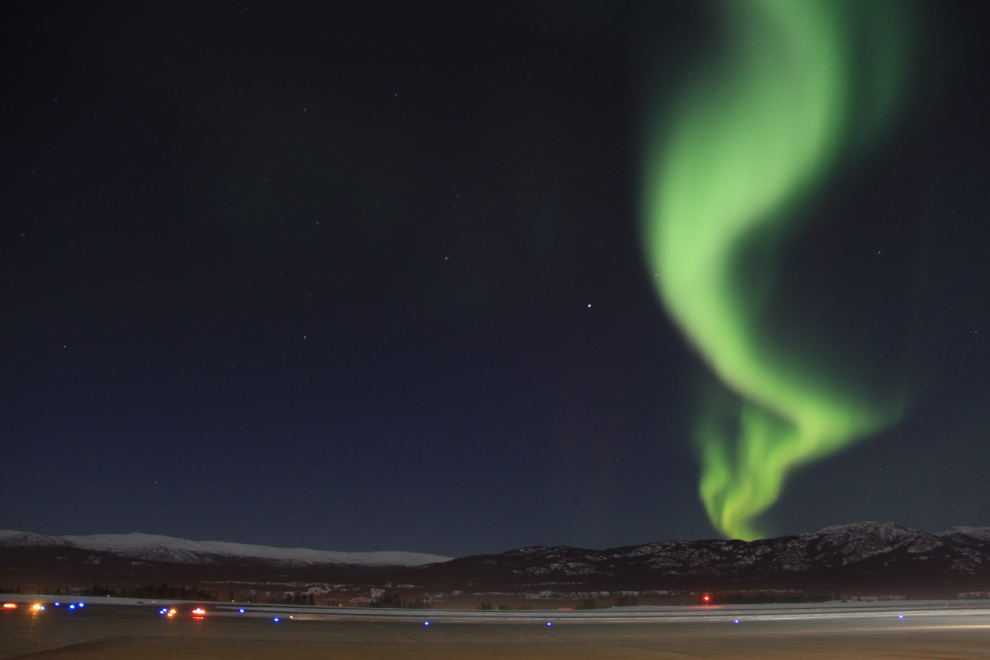
It’s not only man-made lights that can ruin or at least dull an aurora-viewing experience. Mother Nature can do it as well, with her full moons. For the best experience, be aware of not only when the full moons occur, but when the moon rise and sets – I use this lunar calendar for that.
In deciding when to go out searching for the aurora, I have two primary sources. Activity forecasts for about 3 days can be quite accurate, but in recent years I’m finding the accuracy to be dropping dramatically – I often get skunked on nights with extremely good aurora forecasts. But, the forecast by the Geophysical Institute at the University of Alaska Fairbanks is still my primary source. For a look at the immediate possibilities, I use the Ovation 30-minute aurora forecast by NOAA. The image below is a screenshot from Ovation on an exceptional night – unfortunately, we had cloudy skies that night. There are many other aurora forecast sites and apps but after much searching, I haven’t found any better than the two I’ve mentioned.
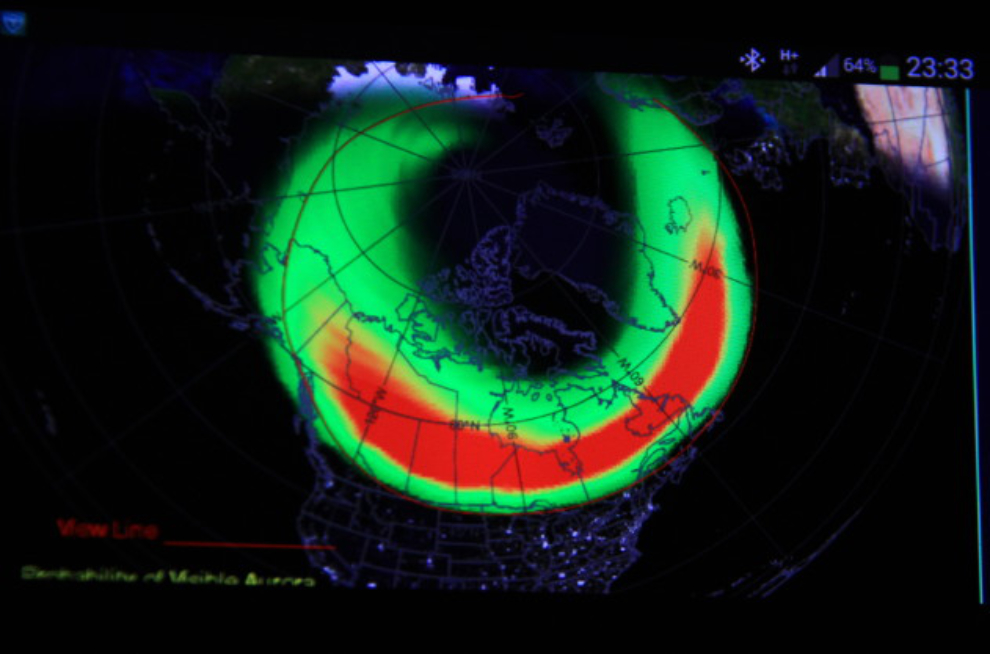
Braeburn airstrip, North Klondike Highway, March 17, 2015.

North of Carmacks, North Klondike Highway, March 17, 2015.
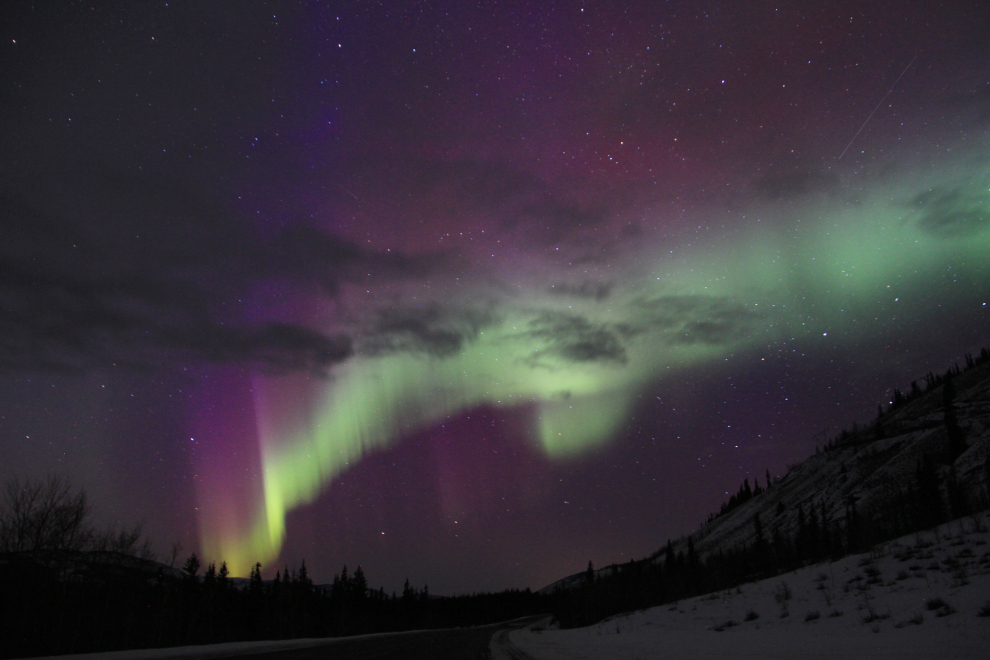
North of Carmacks, North Klondike Highway, March 18, 2015.
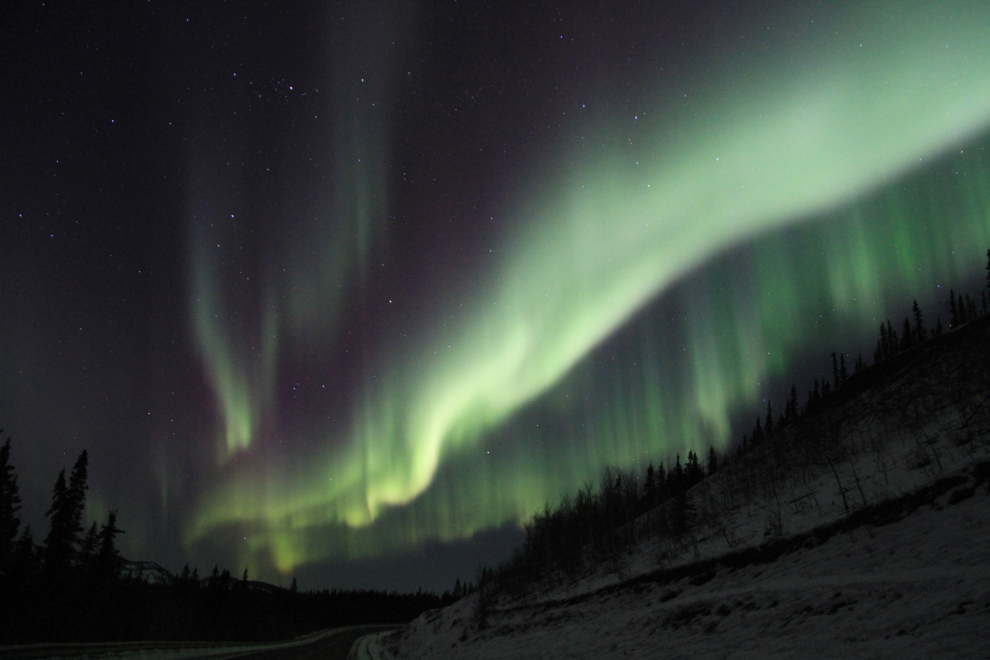
North of Carmacks, North Klondike Highway, March 18, 2015. The 5 photos above will show you that exceptional displays of aurora borealis are possible even when we’re heading towards the solar minimum – they’re just much less common.
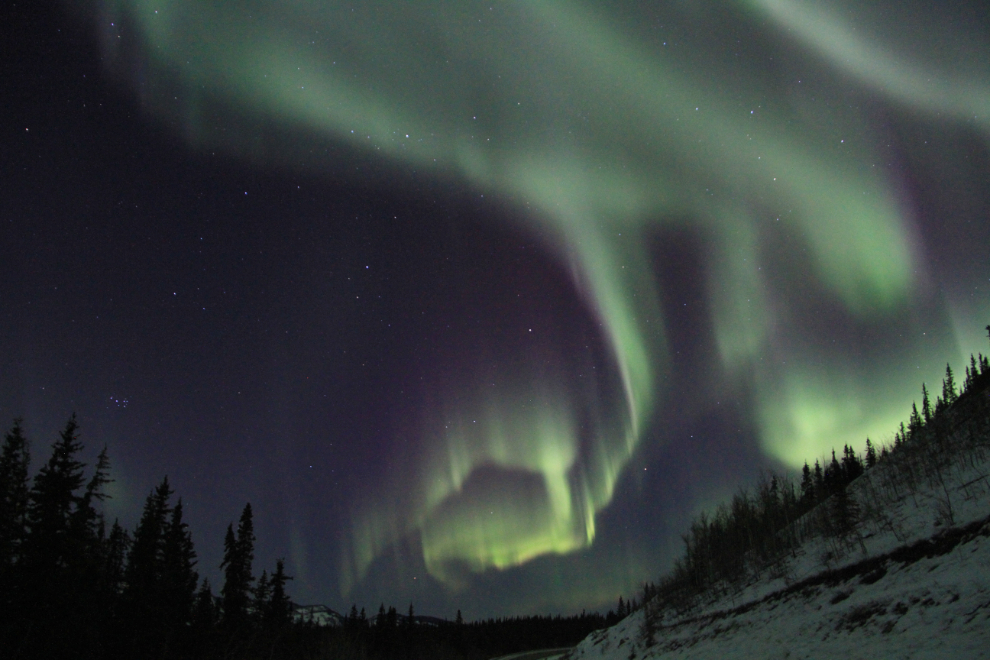
When you’re looking at photos of the aurora, be aware that it’s very easy, and very common, to change to colours of the aurora simply by changing the white balance setting on your camera (there are many other ways, but this is the easiest and most common). The next pair of photos, shot at the same location seconds apart (looking over the Yukon River just west of the Yukon River Bridge), shows one example of what that can do. The orange to the left in each is the lights of Whitehorse hitting a cloud.
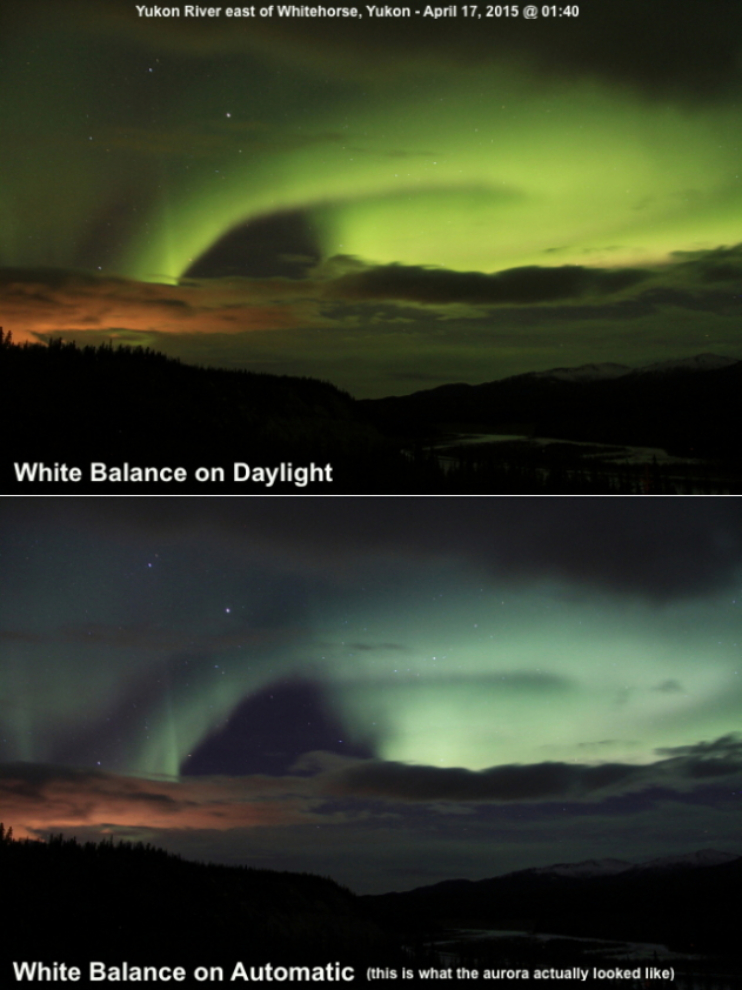
The aurora borealis over my home just east of Whitehorse. March 29, 2015.
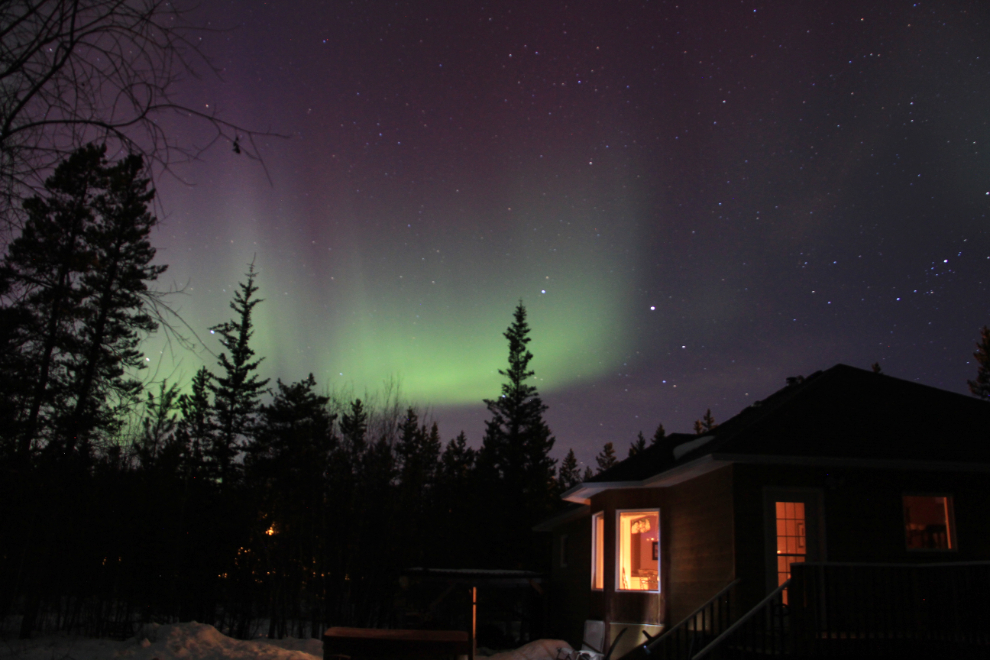
Along the Alaska Highway, April 16, 2015.

Along the Alaska Highway at McRae, April 17, 2015.
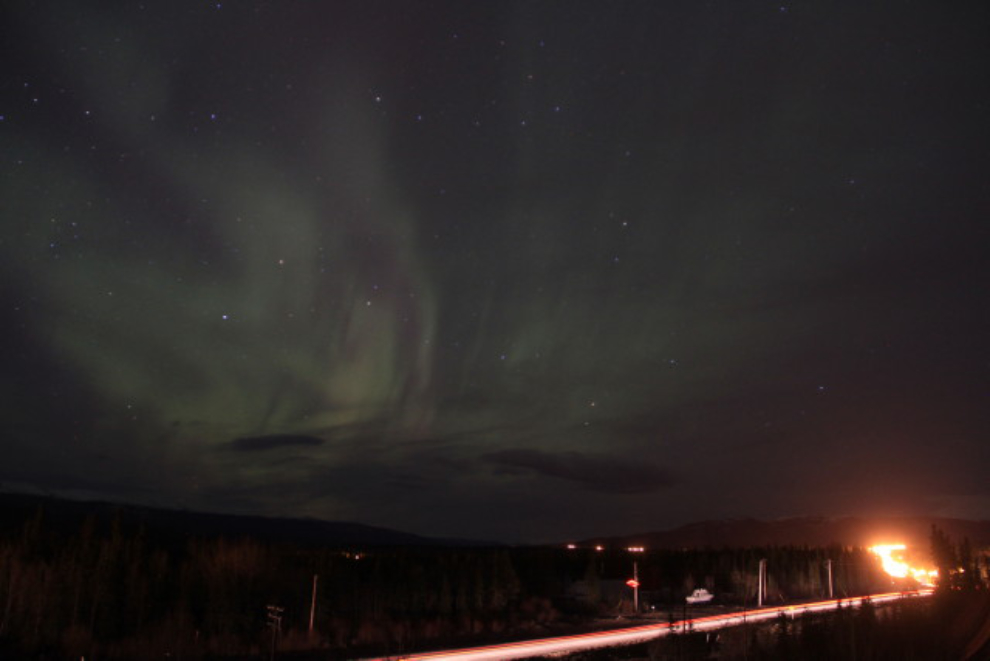
The Yukon River just west of the Yukon River Bridge, April 17, 2015.
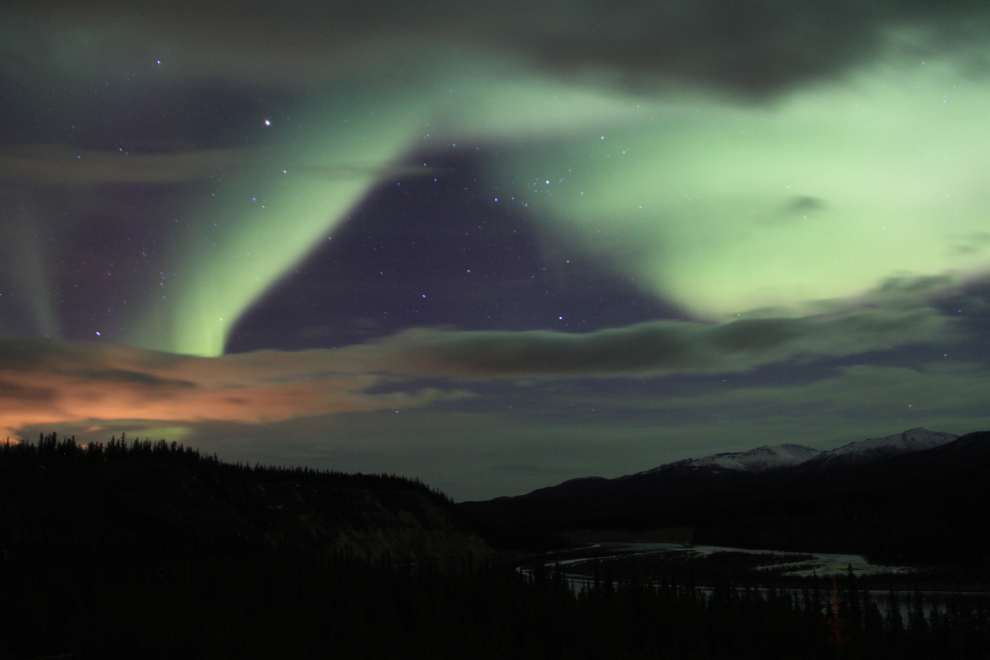
The aurora borealis from my driveway on August 26, 2015.
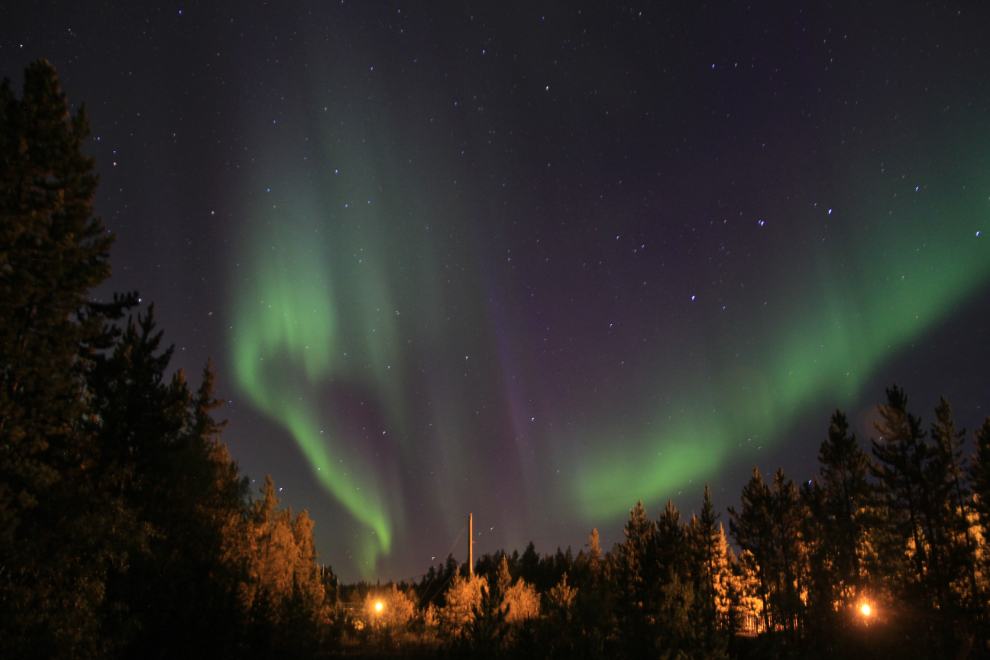
The aurora borealis over my home, on December 20, 2015.
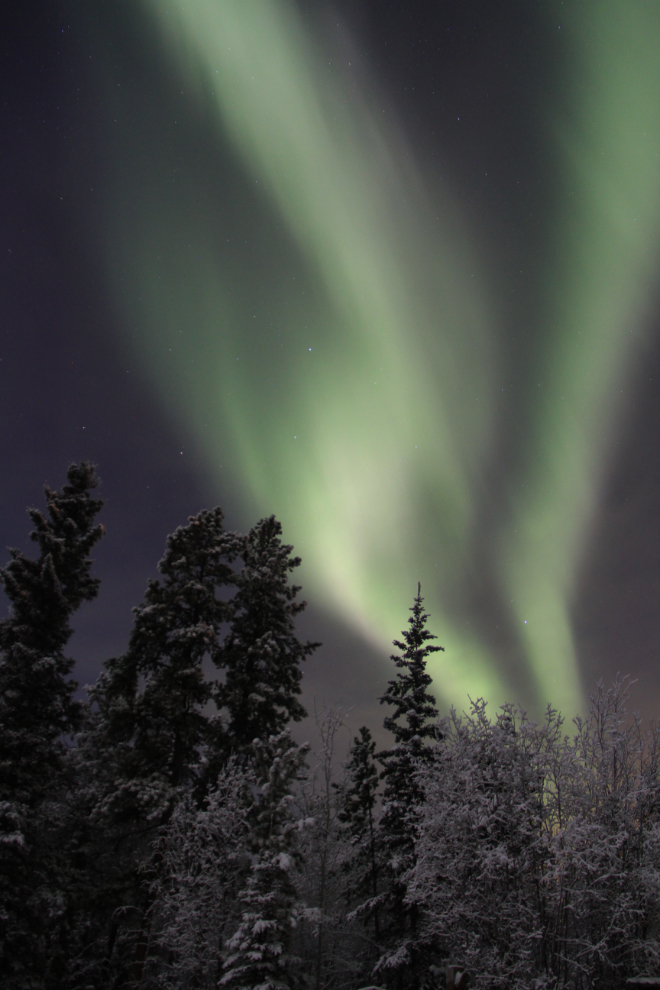
Traffic on the Alaska Highway at the Yukon River Bridge, December 20, 2015. I often try to get traffic in my aurora photos, but even on our main highway, vehicles can be 20 minutes apart in the middle of the night.
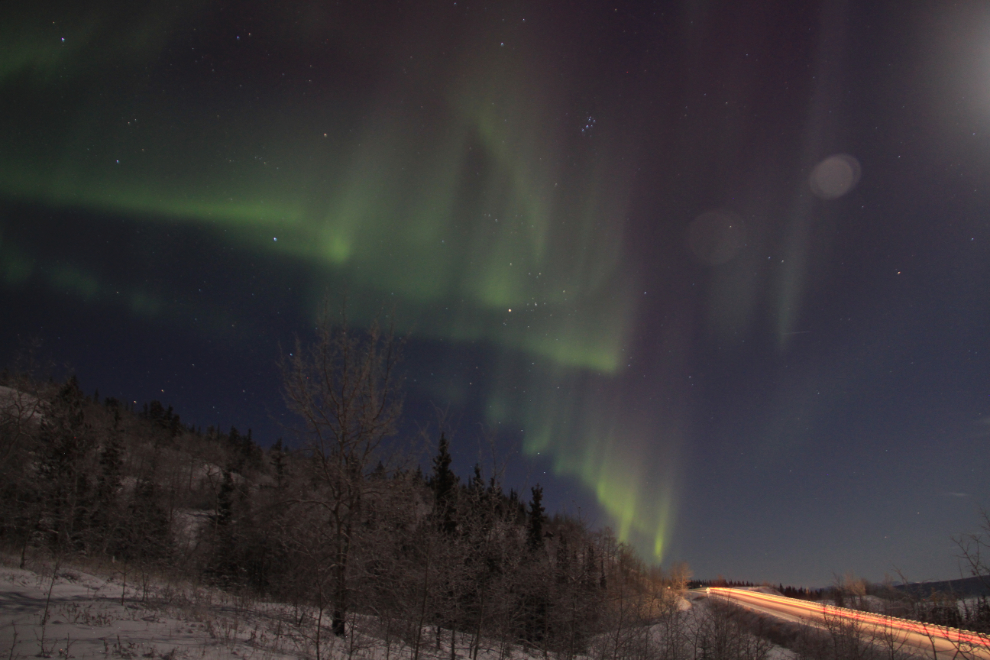
A self-portrait at Lake Laberge, October 8, 2018. Even the bit of light from my headlamp was enough to change the colour of the aurora – the next photo below the selfie shows the actual colour a few minutes later.
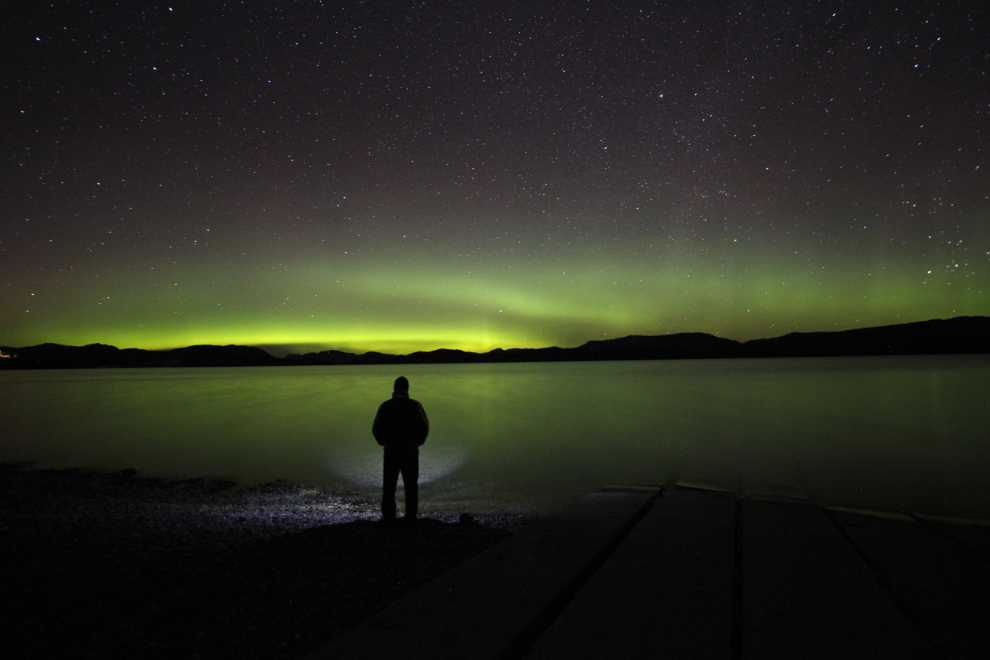
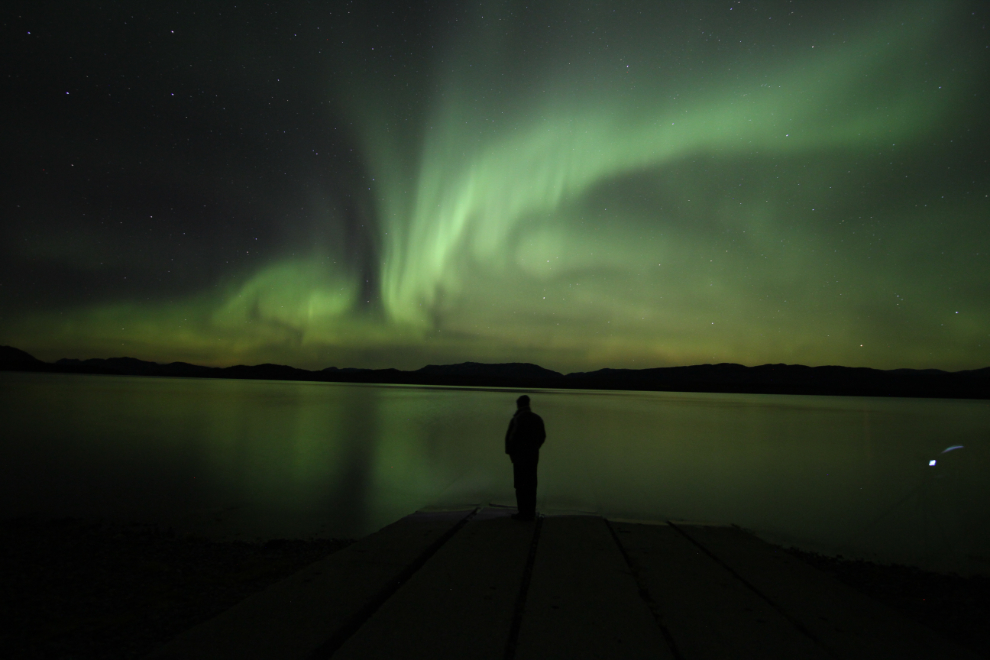
There you go. I hope I’ve provided some information that will help you experience the aurora borealis, or will enhance your aurora experience and/or photos. Feel free to comment with suggestions of your own, or to ask questions.